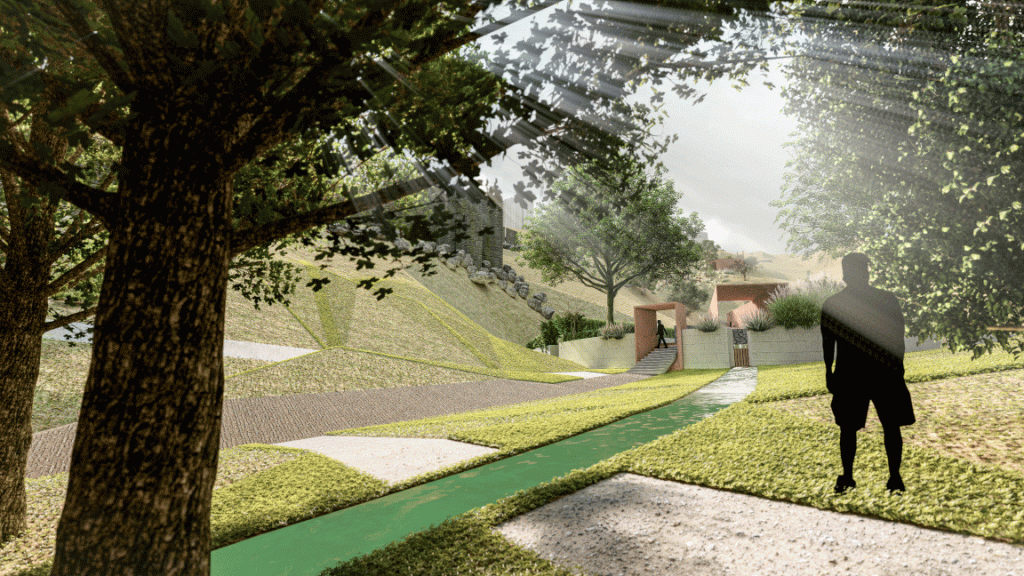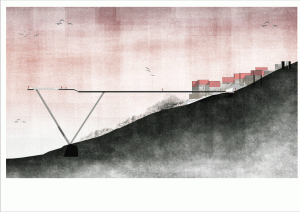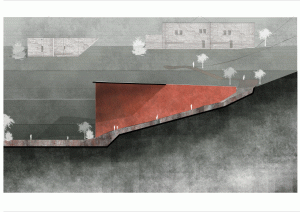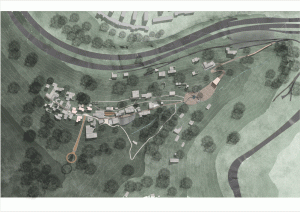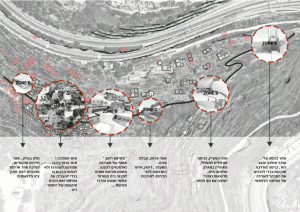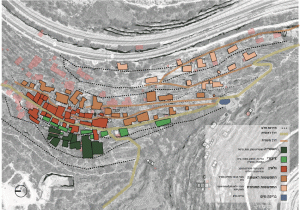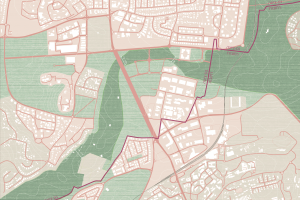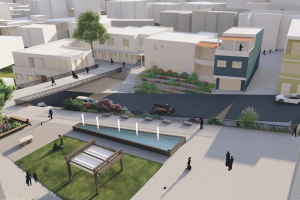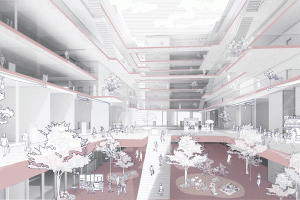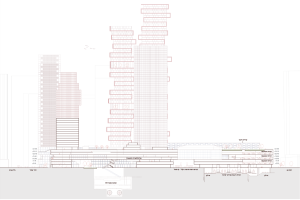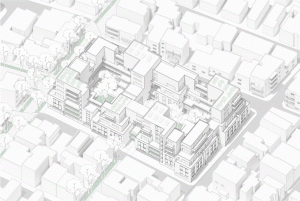Resampling of Future-Past
Following wars, thousands of people are forced to leave their homes in search of a safe haven for themselves and their children, leaving behind ruins of memory.
How do you revive a place destroyed by war, and how do you bring back the spirit of the past?
The village of Lifta, at the northwest entrance to Jerusalem, is an Arab village that was destroyed and abandoned after the Nakba of 48 and is therefore a suitable site for answering this question.
Today, Lifta largely preserves the integrity of its rural texture. It is located on the Jaffa-Jerusalem axis and in 1948 contained about 2,500 residents who worked in agriculture and construction. The houses in Lifta are mostly built of stone and vaults, and over the years, they have adopted concrete and iron construction methods. Thus, the village is a time capsule where you can see a history of development both in the style of construction and in the way of life within walking distance.
Over the years, the village has gone through several incarnations including deportation and settlement. At one point, it was defined as a nature reserve, and in 2006 there were plans to destroy it and turn it into a rich neighborhood of villas and hotels.
The ruins of the village still stand and tell its story — a story that will be passed down to future generations, a story of a people who were expelled day and night, a story of removal and of being forgotten.
My project proposes to establish Lifta as a heritage site to remember the Nakba in front of Yad Vashem and the Israel Museum, thereby producing a narrative fabric of the Palestinian place on the Israeli side. In the project, I propose a path of consciousness that begins with an upper entrance at the historical entrance, passing through a long and darkened canal that symbolizes the exit from darkness to light and from the past to the future. The route passes through the historic spring, which is opened and turned into a public garden. From there, one would walk through the spaces of destruction and memory further down the road.
The project is divided into four areas: the reception and accommodation area, the heritage center area, the ruins and destruction area, and the hotel area.
Due to the unique language of the village and its sensitivity, I decided to preserve the buildings and pour life into some of them. An operation of renovation and reconstruction is done on the spot, and through the programmatic division, I introduce an intervention in the language and material of the past. And in the ruins area, I emphasize the destruction even more and make it stand out by using corten steel to illustrate the wear and tear of a material over time, just like Lifta. The project involves reorganization, renovation, reconstruction, and preservation of the village while strengthening the area’s walkability.



